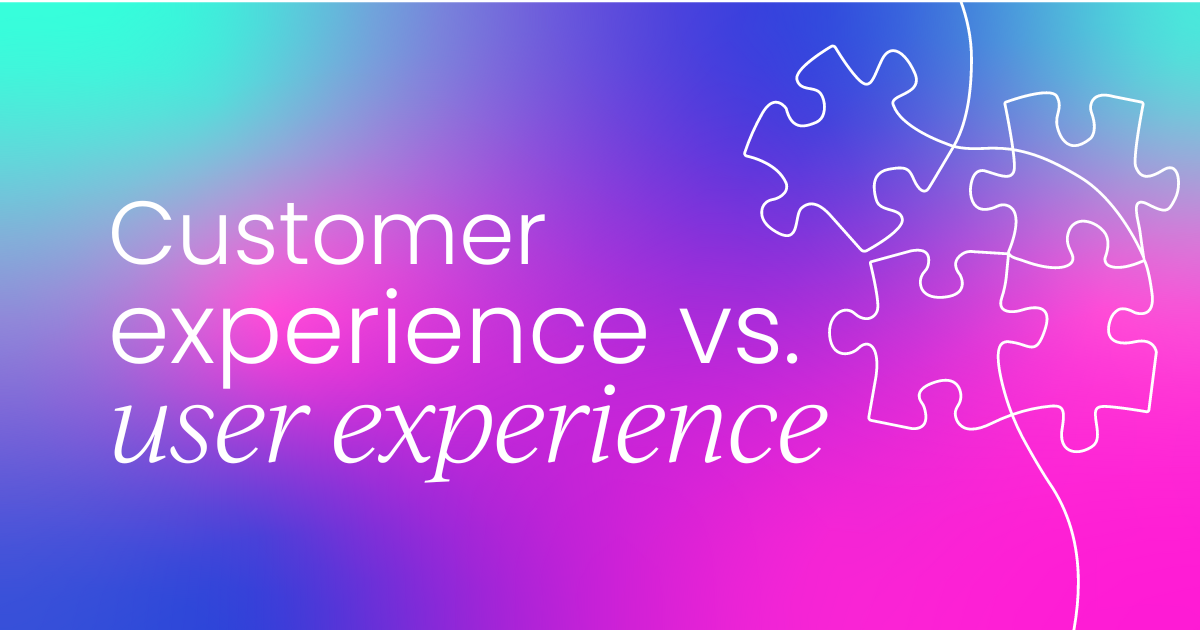This article is based on a presentation given by Laureline at our virtual Customer Experience Summit in 2024.
Catch up on this presentation, and others, using our OnDemand service. For more exclusive content, visit your membership dashboard.
Some say we’re living in the age of artificial intelligence (AI), some say it’s the age of big data. But if anything, we’re living in the age of social media.
While it’s easy to relegate social media to the domain of marketing, customer experience (CX) and success professionals are seriously missing a trick by ignoring the opportunity social media affords CX.
From understanding the evolution of social media over the last fifteen years to exploring the unique value propositions it offers, I've seen firsthand how leveraging these platforms can enhance customer satisfaction and brand credibility.
In this article, I'll share key strategies and advanced best practices that are essential for building a strong social media support team, effectively utilizing AI, and ultimately creating a more responsive and engaging customer experience. Keep reading to learn about:
- The evolution of social media
- The unique value proposition of social media for customer support
- How to build and improve your social media support team
- What the advanced best practices for social media support are
The evolution of social media
Let’s begin by examining how the social media landscape has evolved over the years, particularly in shaping customer expectations for interacting with brands online.
Pre-2010: Early days of social media
Back in 2010, social media was still in its infancy. Brands were just beginning to establish a presence on major social media platforms. From a customer pain standpoint, social media was primarily used to bring disputes into the public eye, often in a "name and shame" manner.
Customers would publicly call out brands for poor experiences, especially in the realm of customer support.
While this might sound detrimental for brands, it actually presented an opportunity. Brands could step in to resolve issues, demonstrate care for their user base, and own their mistakes in a public forum. At that time, having a social media presence was more of a “nice to have,” serving as a competitive advantage and a differentiator.
The mid-2010s: The rise of social media as a support channel
Fast forward a few years to the mid-2010s, and we saw a shift. By then, most brands had established a presence on social media, with Twitter (X) emerging as the go-to platform for customers to reach out to companies.
During this period, many companies had also implemented self-serve strategies for their support contact centers. Previously, customers could easily find a phone number or email address on a company’s website or via search engines.
However, companies began to introduce support hubs, which guided customers through a series of self-serve options before presenting them with a form, chat, or phone number. This made it slightly more complicated for customers to directly contact support.
As a result, customers who simply wanted to speak with a human started turning to social media to initiate support conversations. It was much easier to find a brand on Twitter, and customers could often expect a faster response than through traditional support channels.
This shift heightened the expectation for social media as a support entry point, and failing to provide quality social media support began to be viewed negatively and as unacceptable by customers.
Today: Social media everywhere
Today, we observe two major trends in the social media landscape.
First, there has been a proliferation of social media platforms. What was once limited to Twitter and Facebook has expanded to include numerous other platforms. However, the more significant change is in the customer mindset: now, every online space where customers can express themselves functions like a social media platform.
Social media is no longer confined to traditional platforms; in essence, everything is social media.
As a result, customers expect brands to meet them wherever they are. This means they not only expect customer support on platforms like Twitter, but also on Reddit, Facebook, LinkedIn, and even in the comments section of press articles on sites like TechCrunch or the New York Times.
They might also expect support in-app reviews on Google Play or the App Store, as well as on peer review sites like Trustpilot or the Better Business Bureau. The list goes on, but the message is clear: brands must be present and monitoring their channels.
The unique value proposition of social media for customer support
Now that we’ve established the context of customer expectations, let’s dive into the unique value proposition of social media for customer support. What makes social media stand out from traditional support channels? Why should we, as customer support experts, prioritize it?
Real-time, everyday feedback
One of the most significant advantages of social media is its ability to provide real-time customer feedback, particularly concerning the everyday use of your app. This feedback is often centered around user experience (UX), user interface (UI) design, and overall usability.
Essentially, social media becomes the outlet where customers express the small, daily annoyances that make your app challenging to use. These might be minor friction points, but they can significantly impact user adoption and retention.
You might wonder why this type of feedback surfaces on social media rather than through traditional support channels.
The answer lies in the ease of access
Users aren’t likely to go through the hassle of navigating your support process for minor issues that don’t prevent them from using your product.
For example, consider the effort required: a user would need to Google your company’s name, locate the support page, navigate through several steps in a Salesforce flow, and finally fill out a support form—just to mention that a button’s location is annoying, that a pop-up keeps appearing, or that they dislike the color of a banner.
In contrast, social media offers a much lower barrier to entry. A user can quickly find your brand on Twitter, type out a brief message (often accompanied by a screenshot), and post it in seconds. This ease of access is the primary reason why design feedback, particularly about minor issues, often appears on social media rather than through traditional support channels.
This type of feedback is incredibly valuable. Addressing these daily friction points and annoyances is crucial for creating an app with a sleek, customer-friendly design.
By consistently monitoring and responding to the wide range of feedback provided on social media, you can continually adjust and refine your product’s design, leading to a more polished and user-centered experience.
Detecting bugs and outages at lightning speed
The second unique value proposition of social media for customer support is its unparalleled ability to detect bugs and outages at lightning speed.
Often, customers are the first to notice when something is wrong with your product. They turn to social media to check if others are experiencing the same issue or if it’s just them. This makes social media an incredibly fast and responsive channel for identifying problems.
To provide some context, within the customer experience (CX) industry, service level agreements (SLAs) for social media typically expect responses within one hour. In contrast, the SLA for email support usually ranges from twelve to twenty-four hours. This means your moderation team can catch issues in real-time, as they happen.
If your website experiences an outage, your customers won’t be able to find your phone number, and, in all likelihood, your chat service is down too. In these situations, social media becomes the best avenue for detecting bugs and outages early on.
The diversity of users on social media also plays a crucial role in detecting partial outages, especially those tied to specific locations, operating systems, or versions of your app. The sheer volume of users on social media platforms—potentially thousands, if not millions—makes it possible to spot patterns quickly and efficiently.
For example, at Dropbox, we have implemented a sophisticated alerting system that notifies our on-call engineers when there is a surge in specific keywords related to outages on our social media platforms. If we detect words like "down" or "outage" more than ten times within thirty minutes—or even within two minutes—our system triggers an alert, prompting our engineers to investigate the issue.
Interestingly, social media is often as fast, if not faster, at detecting bugs than traditional data monitoring systems. This speed is critical because, during outages, every minute counts when it comes to restoring your systems. Social media’s real-time nature provides a valuable tool for being agile in bug detection and response.
Uncovering product hacks
The final unique value proposition of social media is the concept of product hacks. So, what exactly do I mean by a product hack?
A hack occurs when a customer uses one of your products in a way that wasn’t originally intended. While customers often find alternative uses for products, in recent years, we’ve seen a growing trend of life hacks and product hacks being shared on platforms like TikTok and Instagram.
Unlike feature requests or negative feedback, product hacks are actually a positive sign. When users discover creative ways to use your products beyond their intended purpose, it indicates that they genuinely love your product. These hacks can serve as an excellent starting point for exploring new product development opportunities.
If customers are going out of their way to create workarounds to use your product in a specific manner that meets their needs, it’s a clear indicator of strong demand for a feature you’re not currently offering.
Moreover, the ways in which they are using your product are often closely aligned with its intended functionality. This means that extending or diversifying your product to officially support these hacks could require minimal research and development effort, making it a smart and efficient way to enhance your product offering.
By closely monitoring social media, you can identify these hacks and use them as a guide for future product enhancements. Social media provides a direct line to understanding how customers are creatively engaging with your products, offering insights that might not surface through traditional feedback channels.
Embracing these insights can help you stay ahead of the curve in product innovation and better meet the evolving needs of your customers.
Building and improving your social media support team
If you’re looking to build a strong social media customer support presence and develop a robust team of moderators, it’s important to start with the basics.
Here are some key principles to guide you:
Transparency and managing expectations
Transparency is crucial. Make sure to clearly communicate your opening hours and provide an estimated response time (ETA). This helps manage customer expectations right from the start, ensuring they know when and how quickly they can expect a response.
Matching the customer’s tone
Social media is often more playful and casual than other channels, allowing for jokes, memes, and puns. However, not every interaction will be light-hearted. Some customers will approach you with serious issues and may be in distress. It’s essential to assess the gravity of the situation and match your tone accordingly, balancing the casual nature of social media with the need for empathy and professionalism.
Ease of access
Make it easy for customers to reach out to you by having a dedicated support handle. This ensures that customers know exactly where to go when they need help, reducing frustration and improving the overall support experience.
Treating social media as a serious support channel
One of the most important points to remember is: Don’t wing it. While social media may seem casual and less formal, it is a legitimate and serious support channel. To be effective, it requires the same level of attention and resources as any other support channel.
This includes:
- Tooling and processes: Implement the right tools and processes to manage social media support effectively.
- Service level agreements (SLAs): Set clear SLAs to ensure timely and consistent responses.
- Handle management software: Use specialized software to manage interactions across various social media handles.
- Escalation paths: Establish clear paths for escalating issues when needed.
- Quality analysis and analytics: Regularly analyze the quality of your support and use analytics to track performance.
- Customer satisfaction (CSAT) and workforce management: Monitor customer satisfaction and ensure your team is well-managed and adequately resourced.
Treating social media support with the seriousness it deserves will help you provide a reliable and professional service.
Finally, aim to be as transparent as possible. Honesty is highly valued when it comes to brand image, and it significantly contributes to your online reputation. If you don’t know the answer to a customer’s question, it’s okay to admit it.
Be honest and commit to finding the right answer and getting back to them. Also, avoid using cookie-cutter responses as much as possible; personalized, thoughtful answers go a long way in building trust and credibility with your customers.
Advanced best practices for social media support
Let’s take a look at some best practices for social media support.
Train your team
The first one I want to emphasize is the importance of training your team.
Social media support is often seen as a hybrid between marketing and customer service, but it’s crucial that your social media moderation team is equipped with the same level of technical knowledge and proficiency as your direct support team. This ensures they can resolve issues efficiently and maintain strong credibility online.
Your team needs to have a deep understanding of your product.
Polish your knowledge base
Building and publishing a comprehensive knowledge base is key to providing consistent information at scale.
A well-maintained knowledge base empowers your moderation team with the most up-to-date information, allowing them to operate quickly in the fast-paced world of social media.
Build a robust feedback channel loop
It’s essential to close the loop by systematically sending every piece of feedback from social media directly to your product team. This practice allows you to leverage social media as a serious and valuable source of product feedback, ensuring that customer insights directly influence product development.
Track your trends and themes
Tracking trends and themes over time is critical, especially if you aim to elevate your social media team to the next level.
There’s no better way to gather clean, actionable data than by manually tagging interactions for customer sentiment, issue type, or themes. While it might be labor-intensive, including this practice in your moderation team’s processes is highly recommended.
This meticulous tracking allows you to correlate social media data with product changes, launches, retirements, and outages. Essentially, the entire lifecycle of your product can be mirrored in the trends you observe on social media.
Dedicate engineering and product releases
Lastly, it’s vital to work closely with your engineering team. Encourage them to dedicate a portion of their time not just to building new products, but also to fixing the issues that are causing significant pain for your customers. This is especially important in the social media space, where agility, speed, and flexibility are key to maintaining and rebuilding credibility.
If your team can quickly address the issues reported on social media, you’ll be in a strong position to retain customer trust and satisfaction.
These advanced practices will help ensure that your social media support team is not only responsive but also deeply integrated with your overall product and customer experience strategy.
The role of AI in social media support
Now that you’re well-versed in social media support, let’s wrap up with one of the hottest topics of 2024: artificial intelligence.
You’d have to be living under a rock to have missed the AI revolution over the past few years. My team and I have spent considerable time exploring how we could best leverage AI in the world of social media.
Generative AI has been a major focus, but it’s also a fairly risky tool when it comes to such a sensitive communication channel as social media. For now, I’d recommend keeping your social media channels managed by skilled and trained human moderators.
The nuances and complexities of customer interactions on social media still require the empathy and understanding that only real humans can provide.
That said, I believe there’s a promising opportunity for AI in the area of social listening. As we discussed earlier, the proliferation of social media channels has created an expectation for brands to have a presence across many platforms. Monitoring all of these channels can be overwhelming, and that’s where AI can really make a difference.
Firstly, AI can be used to capture and track every mention of your brand across hundreds of websites and platforms. This capability is incredibly helpful in ensuring that no conversation slips through the cracks in a fragmented ecosystem.
Secondly, and perhaps more powerfully, AI can utilize natural language processing (NLP) to aggregate themes, gather insights, and produce intelligent, relevant feedback.
AI can weigh insights based on the volume of mentions, helping you prioritize which issues or feedback to focus on.
By using NLP tools that recognize synonyms and cluster feedback together, you can concentrate your development, product, and engineering teams on the most impactful areas.
While the technology available today is still in its early stages, there have been significant improvements, and the momentum is heading in the right direction. I’m optimistic that we’ll soon see impactful AI-generated assistance in social media support that can truly complement and enhance the work of human teams.



 Follow us on LinkedIn
Follow us on LinkedIn






